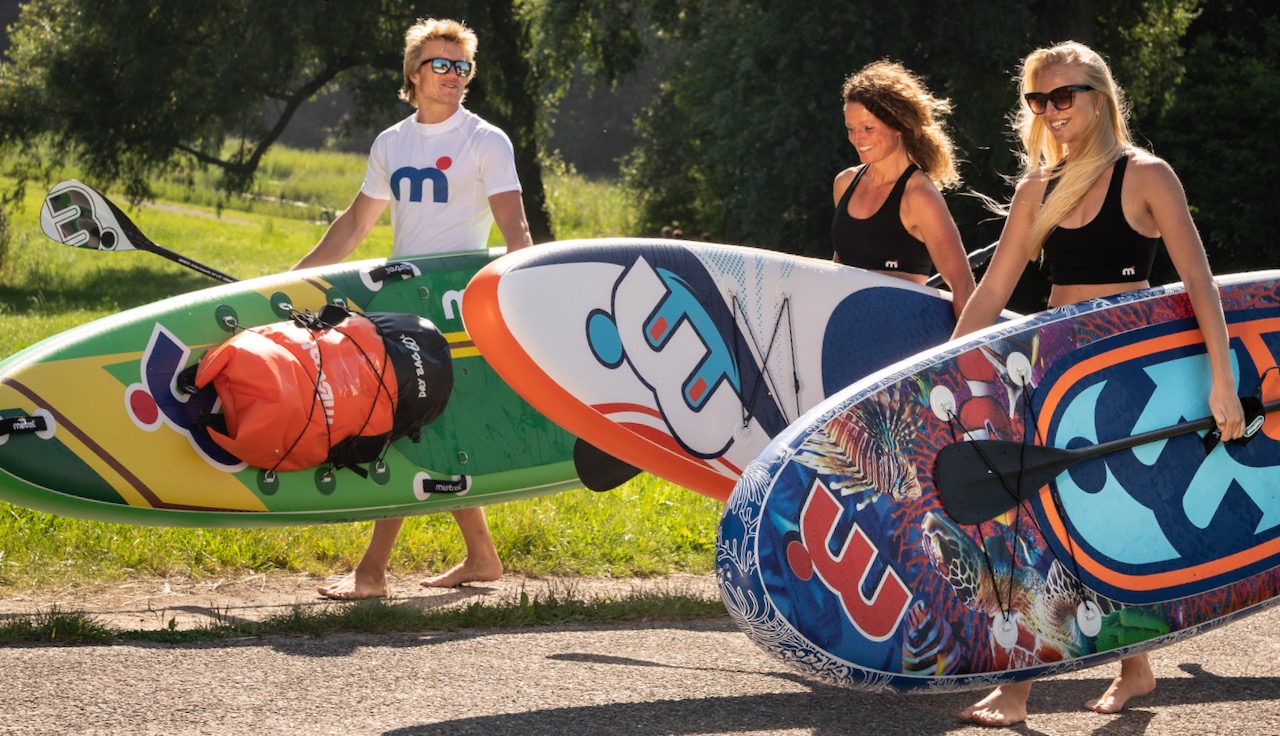Ultimate Guide: Stand up Paddleboarding for Beginners - 2024
8 January 2024This Guide is intended for the First Time SUP Paddleboarder
Why SUP?
When practised regularly, stand-up paddleboard ownership and participation can bring physical and mental health benefits.
Socially, paddleboarding allows you to make new friends and engage with your family on a shared journey of fun and discovery.
The Benefits of SUP to the Mind and Body
- Paddling while standing provides an all-body workout, putting the body under tension from head to toe in a positive way.
- The body's natural response to balance is to 'fire off' signals to your stabilising muscles and, in turn, activate your larger muscle groups.
- Consequently, your body is actively engaged from head to toe in finding equilibrium with the board under your feet.
- The paddling stroke engages the entire body in paddling; your muscular system is reaping benefits.
- Cardiovascularly, your body's natural response stimulates your heart rate and benefits your respiratory system.
- Your mental health and well-being benefit due to the need to be focused while connecting with the natural world.
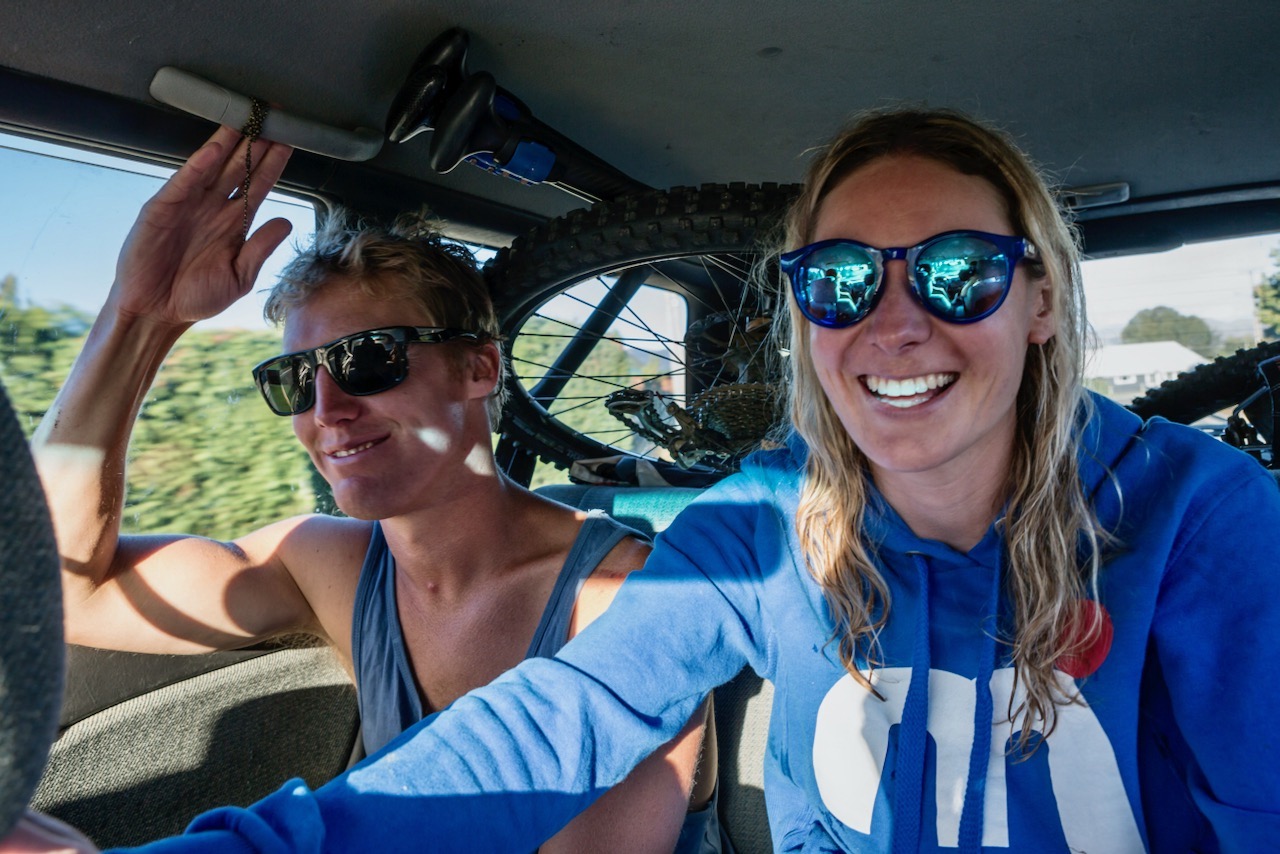
Is Paddleboarding Difficult?
- 'No' is the simple answer, and you can certainly teach yourself to SUP using the 'Discovery Learning' approach.
- Alternatively, you can consider professional tuition.
What SUP Board Should I be Considering Buying?
Before beginning your paddleboard selection journey through to purchasing, there is a list of questions worth asking.
What's Your Budget for Your Paddleboard?
- The question is, 'Do you get what you pay for when buying a stand-up paddleboard?'
- Price variance between SUP boards relates primarily to the quality of construction and additional hardware features.
- This applies to both inflatable paddleboards and SUP hardboards.
Will it be just for you, a partner or the family?
- If your paddleboard will be exclusively for you, then you can match the board to your needs.
- If it's a paddleboard for the family, consider your children's needs as well.
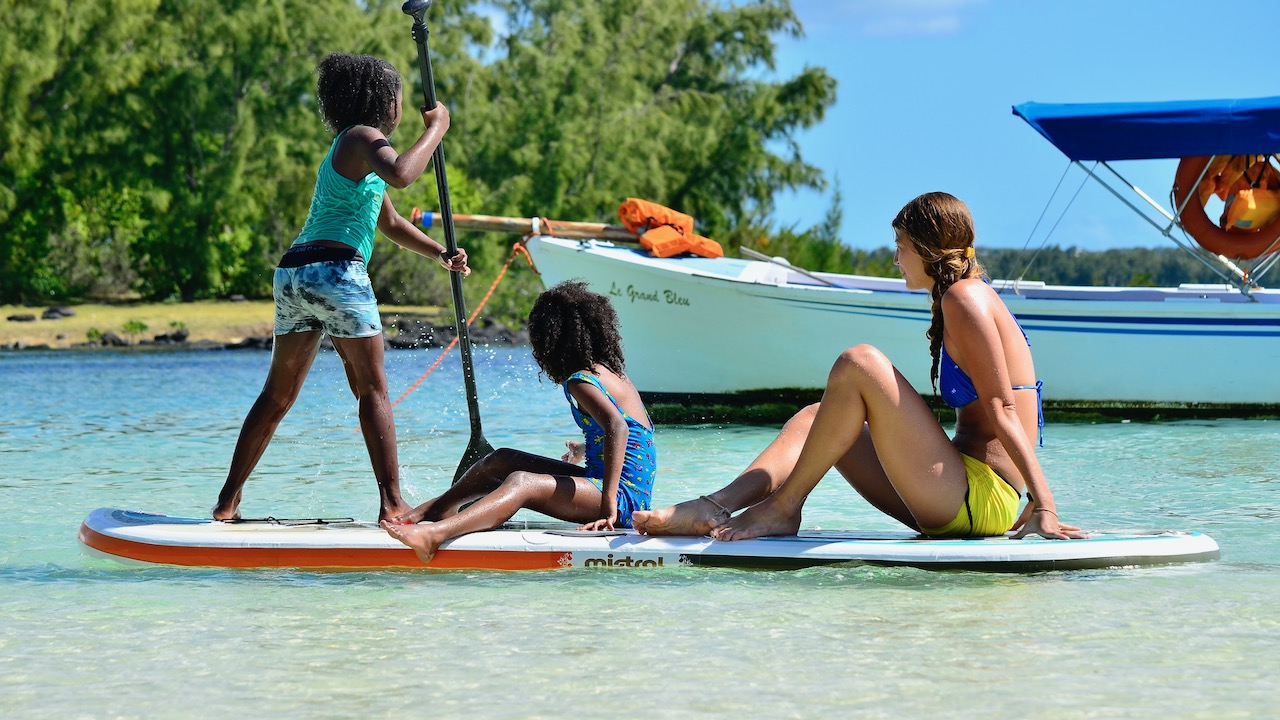
The Most Popular Board Size
- Most riders enter the sport on the classic 10'6 (324cm) x 32" + (81cm) x @250 litre volume inflatable paddleboard.
- Alternatively, the next most popular are boards of 11'5 x 32" + (81cm) @280 litre volume inflatable paddleboard.
- This is also true of the SUP hardboard option, though the board volume will be reduced by 30-50 litres.
- The 32" (81cm) width is optimal for most riders. It allows stability without being too wide, making paddling difficult.
- The 10'6 (324cm) length allows a straight rail without being too short or too long for too much or too little manoeuvrability.
- If you are above 76kg, consider an 11'5 (350cm) board and above.
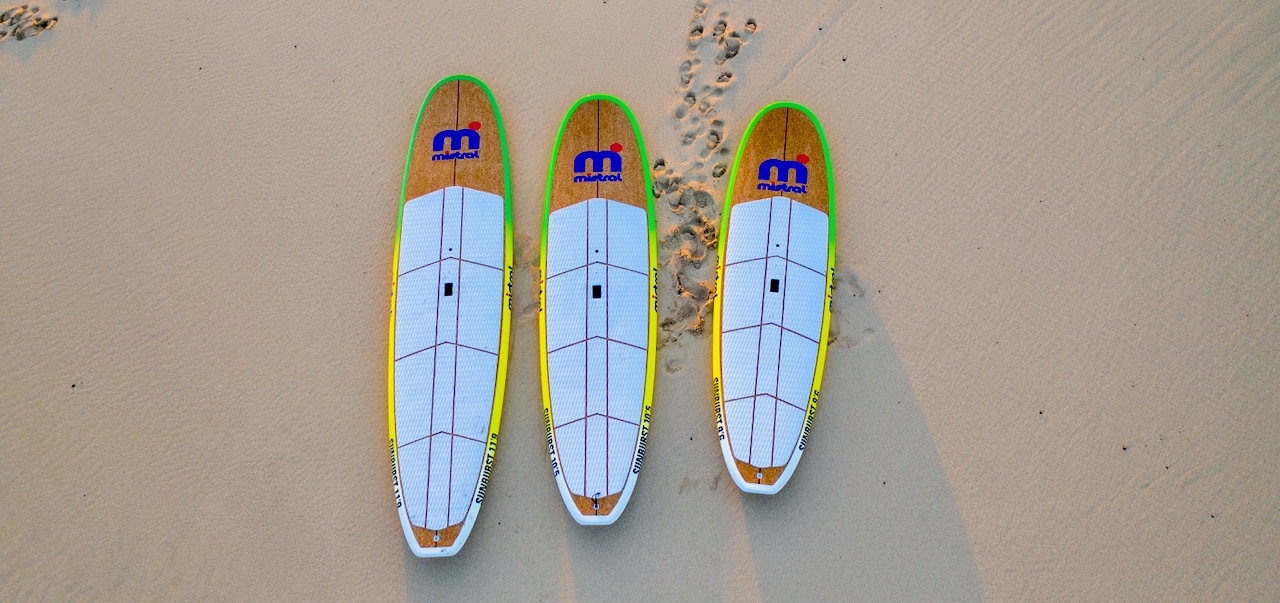
Rider Height and Board Width Guide (Inflatable Boards)
- The larger and heavier your physical size, the more you will benefit from a wider paddleboard.
- Any paddleboard wider than 31" (79cm) is considered wide.
- Any paddleboard under 30" (76cm) is considered narrow
- Any paddleboard under 27" (68cm) is considered very narrow.
While a paddler's weight is a consideration, height is a critical issue regarding paddling efficiency.
Having the optimum width board for your height allows the paddler to achieve a vertical paddle stroke over the side of the board.
This vertical stroke encourages the board to travel in a straight line and creates stability.
For Entry Level Riders
- All-round and performance all-round boards -
- Riders under 5'5 (167cm) should consider boards 31" (79cm) and under.
- Riders over 5'5 (167cm) and up to 6' (183cm) should consider 32" (81cm) wide boards.
- Riders over 6' (183cm) (and heavy riders) should consider 34 " (86cm) wide boards.
- Touring boards -
- Riders under 5'5 (167cm) should consider 30" (76cm) wide and less.
- Riders over 5'5 (167cm) and 6' (183cm)+ should consider 30 (76cm) or 32" (81cm) wide boards (depending on the cargo, kids and dogs).
- Riders over 6' (183cm) + also have an option of 34" (86cm) wide boards if they feel they need extra stability to compensate for their height.
- 34" (86cm) wide boards are suitable for heavier riders who need extra stability over speed or are expecting to load the board up with gear.
Board Volume
- A paddleboard's overall size is summed up by its total internal volume (vol metric) size.
- Commonly, this is measured in litres.
- Almost every inflatable paddleboard will support the heaviest of individuals.
- 1 litre of board volume will support 1kg of weight.
- The issue of board width will be more critical.
- Inflatable volumes range typically from 200 to 400 litres.
- Regarding SUP hardboards, volumes vary greatly, from small SUP surfboards to raceboards.
- Hardboard volumes tend to be significantly lower than inflatable SUP boards.
- Your body weight x 3 will give you a close optimum vol metric figure for a suitable paddle board, i.e. 75kg x 3 = 225 litres
- Your body weight x 2 will give you a close optimum vol metric figure for a board for SUP surfing, i.e. 75kg x 2 = 150 litre
- You need more volume if carrying cargo or needing a faster 'dry board'
Consider Pre-Existing Skill Levels and Familiarity with Boardsports
You can consider a narrow high-performance paddleboard if you have extensive experience with other board sports.
If you see yourself progressing quickly, it's better to invest in a paddleboard that will challenge you in the beginning phases.
It's a good process to grow into your paddleboard rather than outgrow it too early.
Board Thickness
- Measured from the top deck to the hull underside.
- Inflatable paddleboards vary from 4-6" thick.
- While a 6" thick inflatable board may feel a little 'corky,' it will last longer with use.
- Most SUP hardboards are 4 - 4.5" thick, though raceboards can be up to 10" thick in sections.
- Inflatable SUP boards are the same thickness from nose to tail.
- SUP hardboards vary in thickness from nose to tail.
Key Design Features Determining Paddleboard Performance
- Height of Rider - Determines board width (see above)
- Weight of Rider - Determines board thickness
- Length of Board - Determines performance
Do you want to Paddleboard with your Dog?
- Many dog owners enjoy paddleboarding with their dogs.
- Consider a broader board of 31" (79cm) or more to accommodate them.
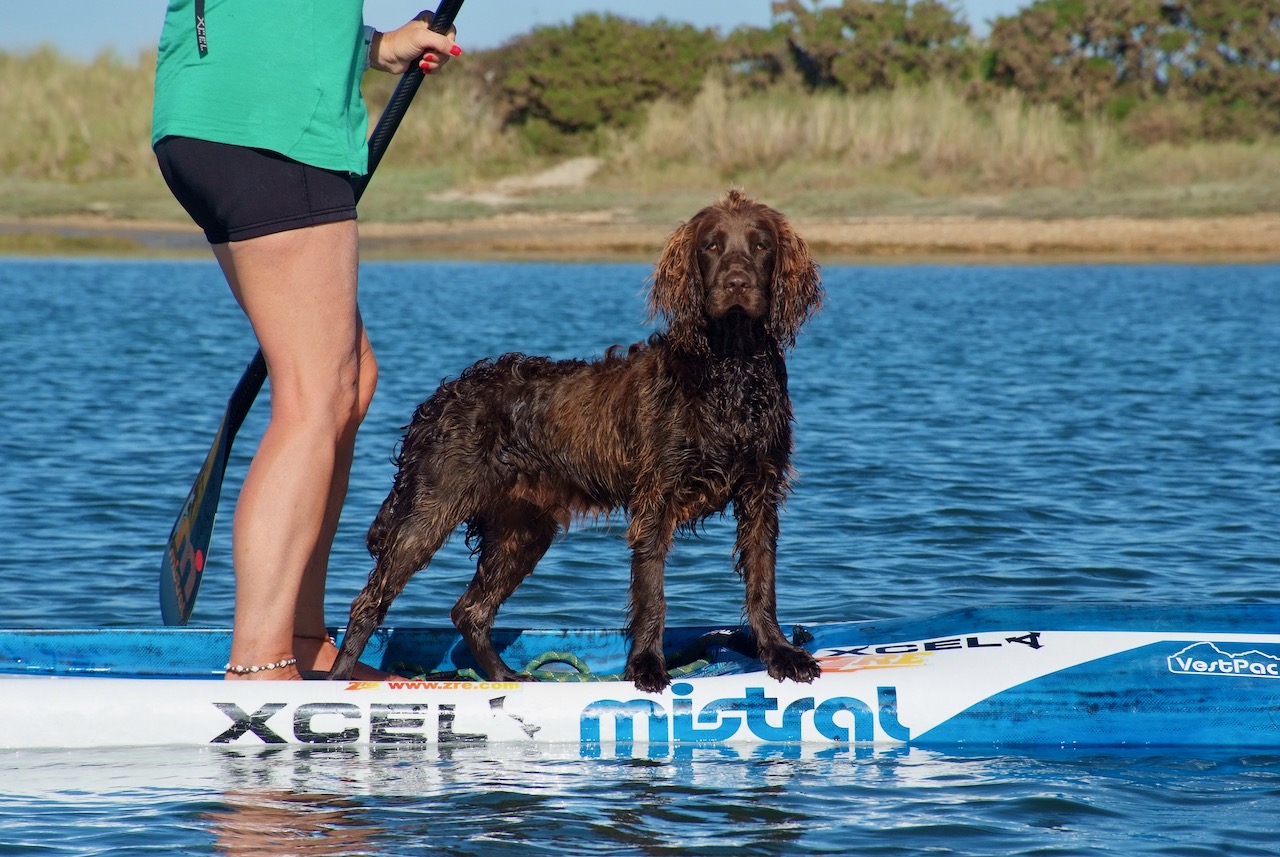
Paddleboarding with Your Kids
One of the great joys of paddleboard ownership is sharing your water time with your kids.
The correct paddleboard will allow for a shared experience and a great introduction to water sports and recreation.
Most of our inflatable paddle range will accommodate children-passengers.
- Ideally, you will want an inflatable paddleboard of at least 10'6 for taking a passenger from 4 years to 12 years of age.
- You can expect a weight range of 15 - 41kg between these ages
- If your board is 3 times the volume of your body weight, you will have more than enough volume to SUP with your child.
Kids' Stand Up Paddleboarding
For those kids wanting to paddleboard solo, consider a board that will suit their body size.
Ideally, you will want a board they can grow into as they learn before progressing to something longer.
An inflatable board between 9'0 and 9'6 is a great starting point for kids of around 6 years of age.
Consider a suitable, lightweight, adjustable paddle and PFD (personal floatation device).
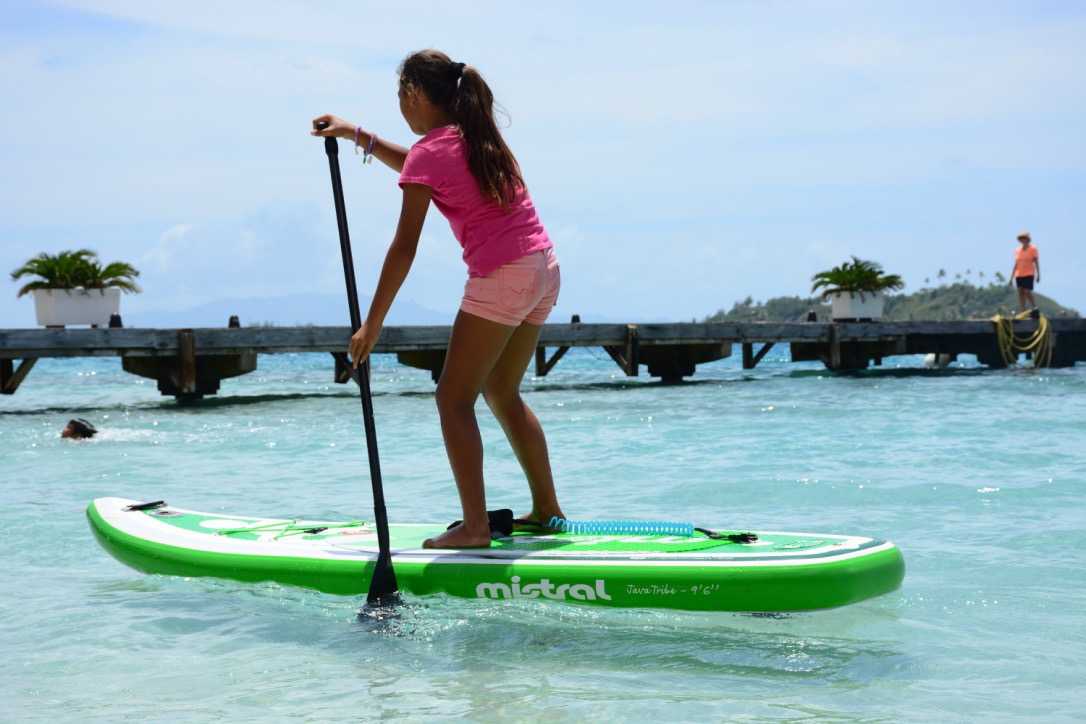
Inflatable Paddleboard or Hardboard (Rigid) Paddleboard?
INFLATABLE PADDLEBOARD IN BRIEF
Constructed from military-grade PVC with internal polyester threads, an inner chamber is inflated using a simple hand pump.
Most inflatable stand-up paddleboards have a single inner chamber; less common are dual-chamber boards.
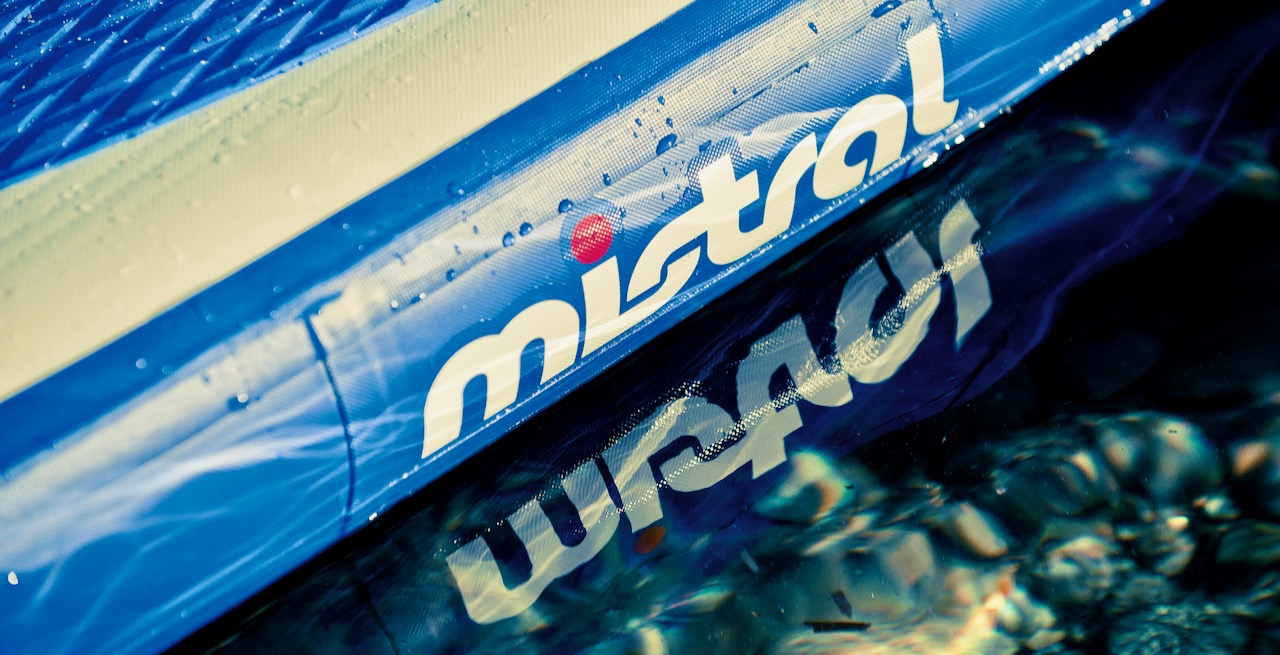
HARD (RIGID) PADDLEBOARDS IN BRIEF
An internal foam core is laminated (wrapped) in a fibreglass or carbon fibre cloth and then covered with an epoxy resin.
Some will feature wood laminations such as bamboo or pine for decorative and structural reasons.
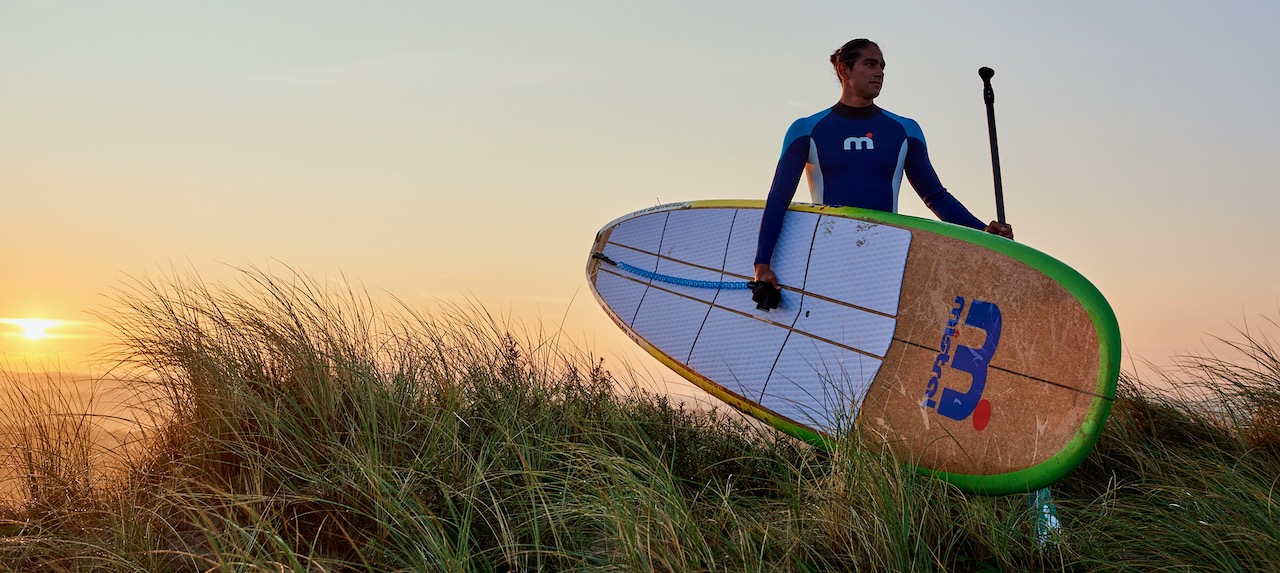
General Considerations Regarding Stand-Up Paddleboards
- Storage: An inflatable paddleboard will be your best option if you have limited space and storage.
- Portability: Consider the overall ease of carrying and handling your paddleboard from the car to the beach and water's edge.
- Transportability: An inflatable paddleboard is ideal if you plan to travel with your paddleboard, especially by plane.
- Budget: Generally, an inflatable paddleboard is the cheaper option for a ready-to-go package.
- Impact on falling: The inflatable paddleboard offers a lower impact option and is ideal for a family.
- Overall comfort: The inflatable paddleboard will be softer underfoot and for lying down.
- Damage: While the inflatable is less prone to surface damage, a hardboard has greater longevity.
- Performance: Hardboard (rigid) paddleboards can be more precisely designed and perform better.
- Stability: Inflatable paddleboards have a 'corky' feel underfoot and perform best in calm waters.
- Maintainance: Inflatable paddleboards require less general maintenance.
- Longevity: A rigid board will outlast an inflatable equivalent if cared for.
- Resale value: Generally, a rigid paddleboard will retain its value better if it is well maintained.
INFLATABLE STAND-UP PADDLEBOARDS
Inflatable Paddleboard Pros
- Ease of storage
- Ease of portability (carrying and rolling on wheels
- Generally lighter in weight
- Ease of transportation (in vehicles, planes, trains etc.)
- Lower entry cost for a complete SUP package
- Low impact when falling and retrieving
- Softer underfoot for added comfort
- Less prone to dents, dings and scratches
- Often supplied as a complete SUP package (Board, Paddle, Pump, Leash, Repair Kit and Bag)
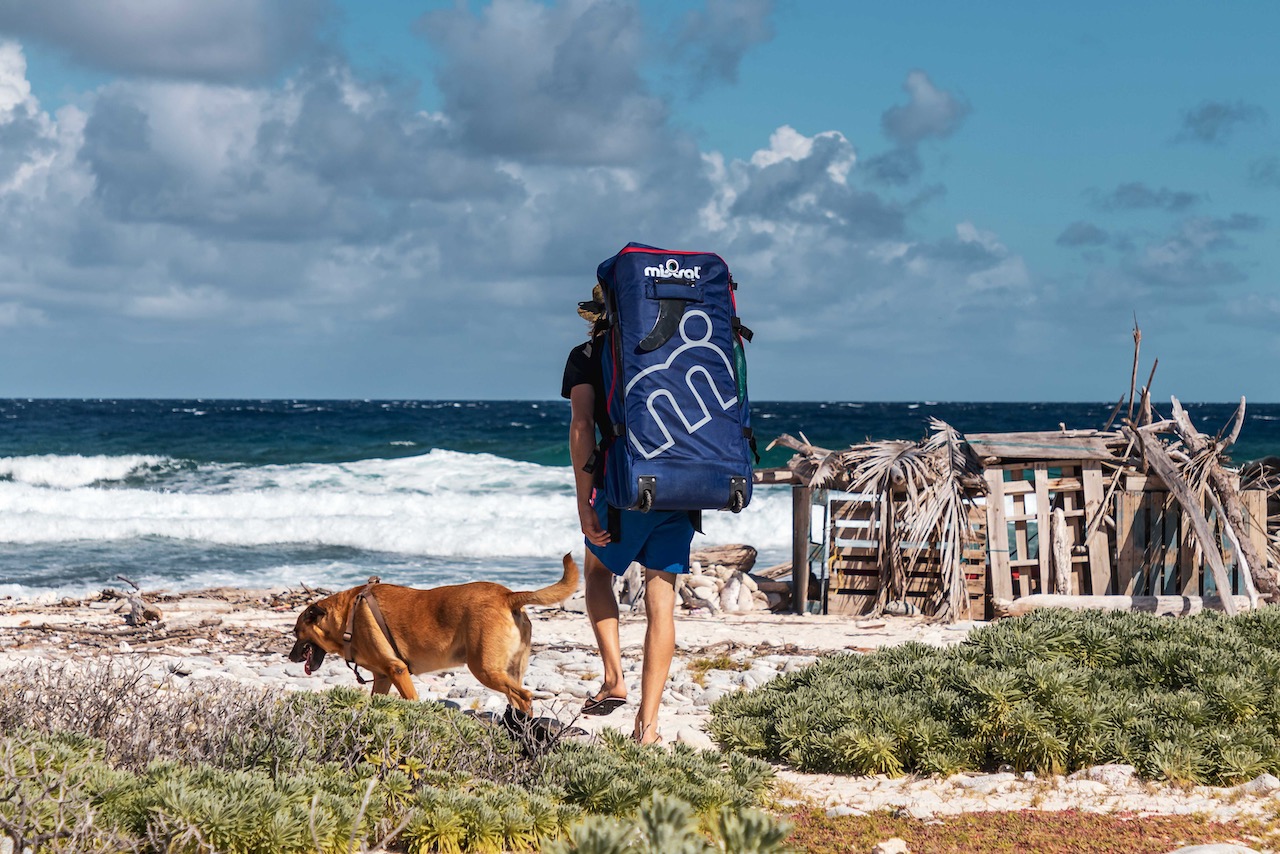
Inflatable Paddleboard Cons
- Generally lower overall top-end water performance
- Less stable when 'like for like' width and lengths are compared (hence, inflatable paddleboards are often quite wide)
- Require inflation and deflation followed by stowing away between uses.
Are Inflatable SUP Boards as Fast as Equivalent SUP Hardboards?
- It's unrealistic to make comparisons.
- The bottom line is that a hardboard will always be faster due to its rigidity and added design features.
- In rare circumstances like river running, the inflatable is superior regarding buoyancy needs and lowered impact issues.
Can Inflatable Paddleboards Remain Inflated?
Yes, you can keep your inflatable SUP inflated indefinitely.
Can I Strap my Inflatable Paddleboard to a Roof Rack of a Vehicle?
- Yes, but could you be sure to pad the edges of the board where the straps tension and wrap around.
- Do not over-tighten, and do not leave exposed to intense UV sunlight.
- You should modify your speed and avoid highway speeds.
How Long Does it Take to Inflate an Inflatable Paddleboard?
- The larger the board's internal volume, the longer this will take.
- On average, allow for 6 -10 minutes for average volume-sized boards.
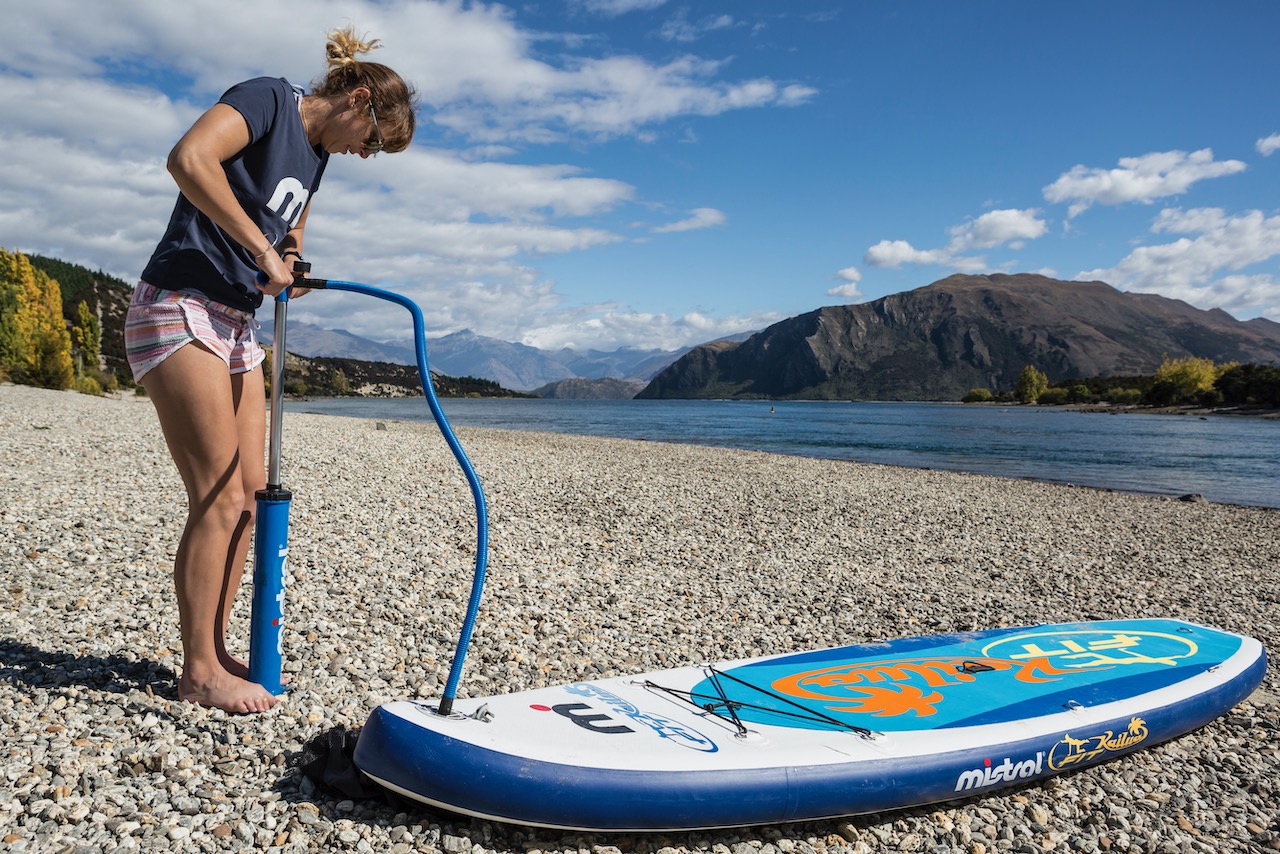
What is a Dual Action SUP Pump?
A pump with a lever can switch the hand pump to inflation on both the up and down stroke as you operate the pump.
Usually, you use this feature until the pumping action becomes difficult, then switch the lever to a single action.
When set on a single action, air is forced into the board chamber only on the downstroke.
Can I Attach a Kayak Seat to an Inflatable Paddleboard?
Inflatable boards more often have a set of added deck D-rings, allowing a kayak seat to be secured.
To best use the system, you must use a kayak paddle with double-blade ends.
Many of our Mistral inflatable stand-up paddleboards have this facility.
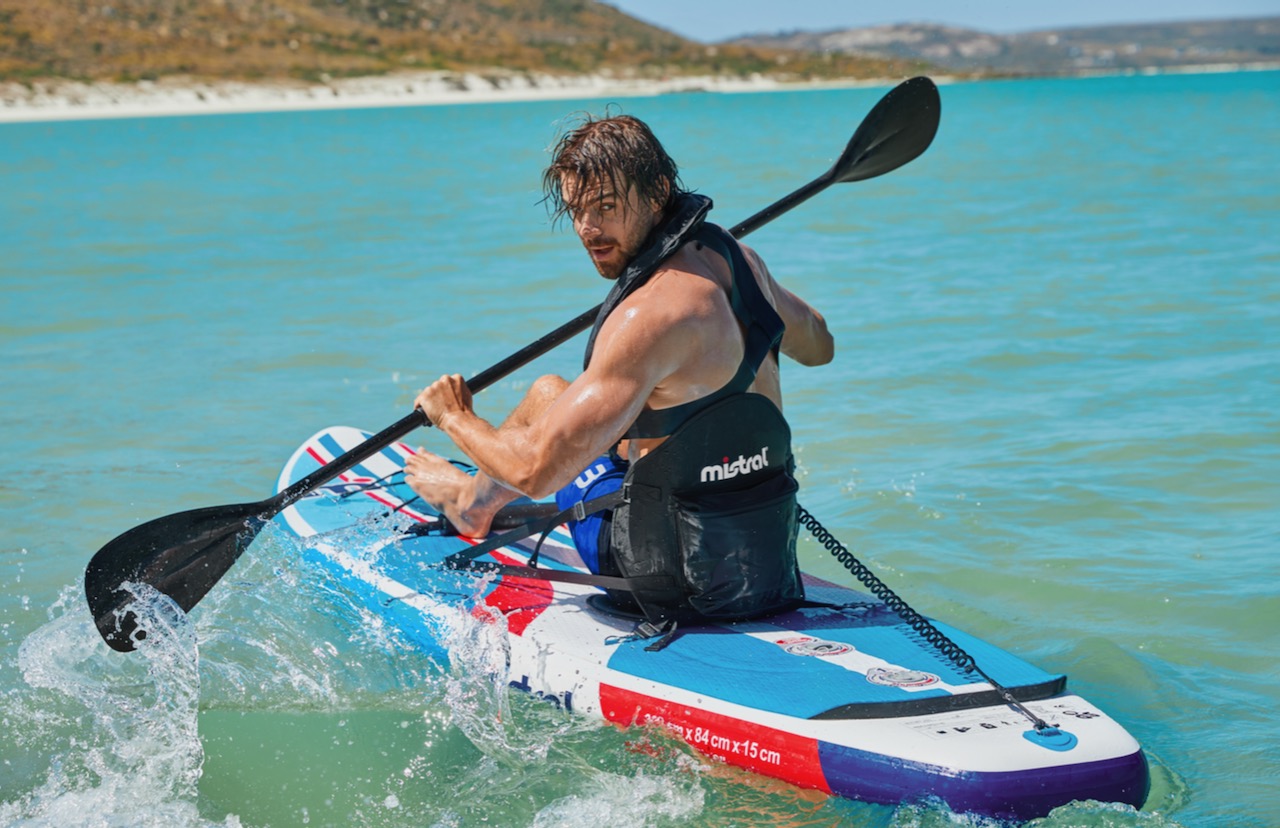
Is it Easy to Repair a Leaking Inflatable Paddleboard?
It's rare for the PVC outer skin of an inflatable to be punctured.
Repair kits, including patches and glue, are supplied standard with inflatable paddleboards and are adequate to repair small punctures.
The seams of your paddleboard must be cared for by rinsing them with fresh water and drying them before storing them away from any heat source.
RIGID (HARDBOARD) STAND-UP PADDLEBOARDS
Hardboard (Rigid) Paddleboard Pros
- Generally higher-performing
- Though prone to damage, they can be fixed and outlive an inflatable.
- A more extensive range of specific performance designs (surf, racing, etc.)
- Are more or less ready to go on arrival at the water.
Hardboard (Rigid) Paddleboard Cons
- Require storage consideration
- Often heavier than inflatable equivalents
- Fewer transportation options
- Higher entry cost for board only.
- High impact when falling and retrieving
- Hard underfoot after prolonged time
- Prone to dents, dings and scratches (but fixable)
Why Would I Consider a Hardboard Paddleboard?
- If storage is not an issue.
- If you can transport your paddleboard using a vehicle to the water.
- You live right on the water's edge.
- You won't be travelling by plane with your paddleboard.
- You're seeking a high-performance, purpose-made board.
- You're interested in a higher-performing all-around board and wish to ride some waves.
Hardboards often receive a lot of negative and misguided comments from inflatable SUP brands.
It's in their interest to dismiss the many positive features of hardboard construction.
Are Hardboards Difficult to Repair?
- If you have basic handyman skills, 'no'; otherwise, a fibreglass repair shop can always help you.
- The most crucial issue is to prevent water absorption into the foam.
- If there is evidence of a crack or hole, stop using the board and allow it to dry out before a repair.
SOFT TOP STAND-UP PADDLEBOARDS
What is a Soft Top SUP Board, and What Are the Advantages?
A soft-top SUP board utilises a hardboard construction with soft EVA foam padding covering its entire deck area.
Usually, the EVA foam wraps around the rails of the board.
Epoxy resin and fibreglass laminate are the usual materials used for the outer shell.
- With this construction, you can achieve hardboard performance with low-impact, soft-feel decking.
- Soft-top SUP boards are often favoured by SUP Schools and families.
- The rails are protected from 'dings' onshore, paddle impact and impact against rocks etc.
- When in the water, if the board hits your legs, the foam absorbs the impact.
- The overall feeling underfoot is very comfortable, limiting fatigue.
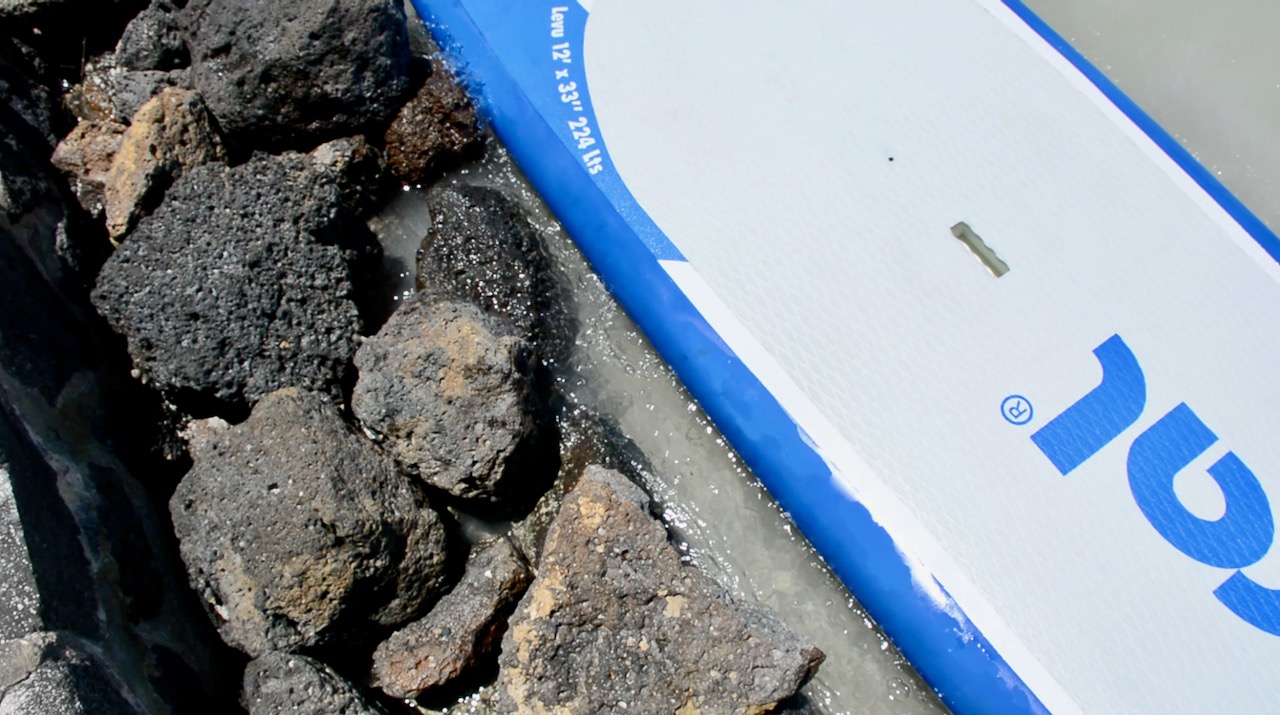
What are the Different Niche Disciplines of SUP?
- How and where you see yourself using your paddleboard is a critical consideration.
- As a first-time SUP board buyer, you may have limited uses besides being on the water.
- On the other hand, you may have a goal you want to achieve.
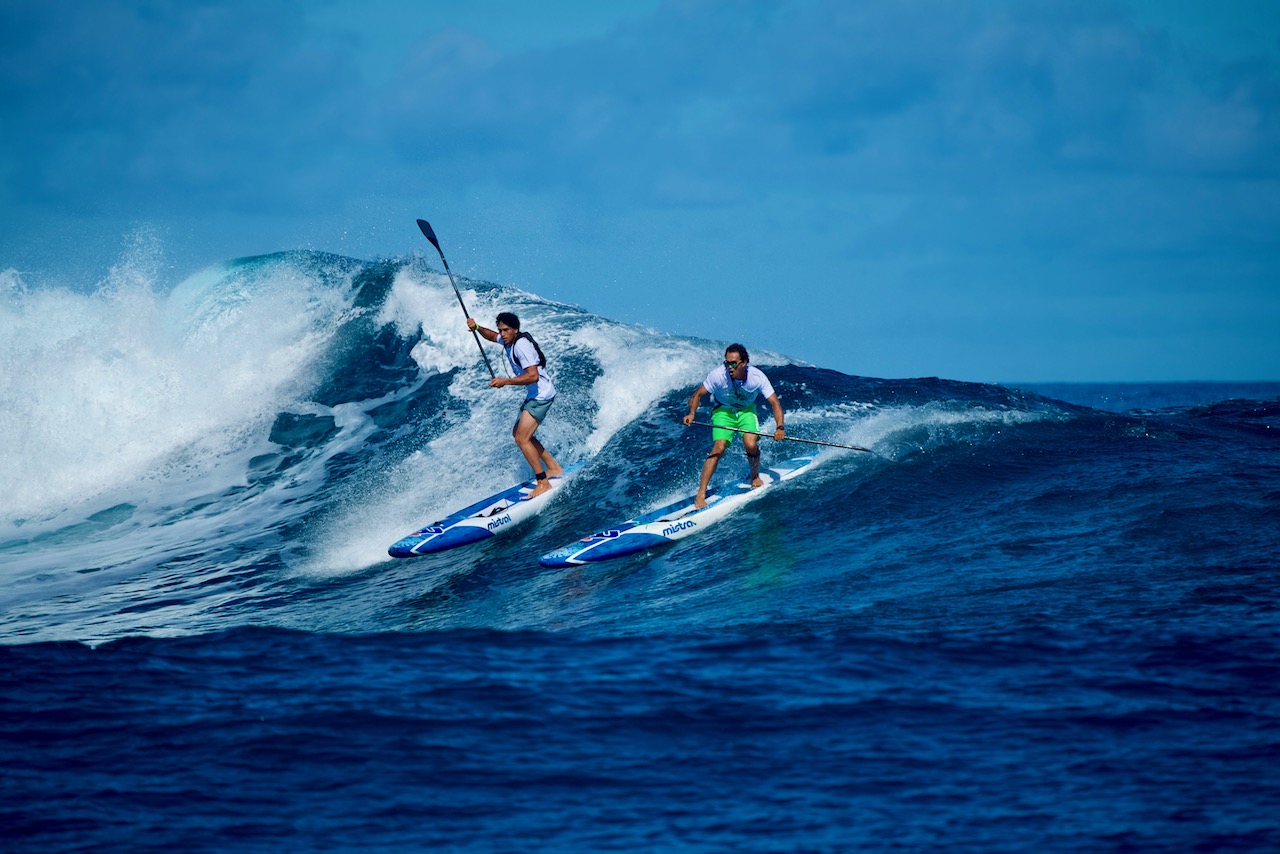
SUP All Round / SUP Recreational Family (Beginners)
- Between 10'5 (320cm) and 11'6 (353cm) in length and 31 (79cm) - 33" ( 84cm) wide.
- The most sought-after boards for family fun.
- It is an excellent design for learning and having fun near the shoreline.
- Hardware features may include cargo netting, kayak seat fitting option, removable fin/s, carry handle, and grab handles.
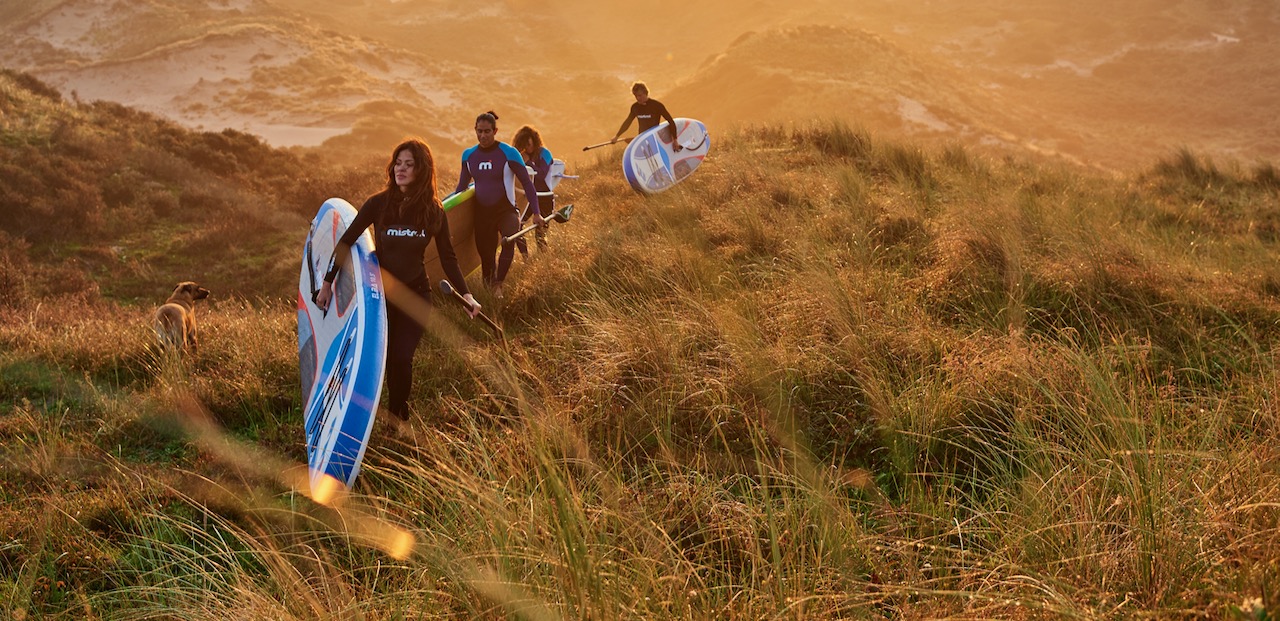
SUP Yoga / SUP Pilates (All-Comers and Beginners)
- Between 10'5 (320cm) and 11'6 (353cm) in length and 31 (79cm) - 33" ( 84cm) wide.
- High stability, convenient size, and smooth decking are vital factors.
- Predominantly inflatable paddleboards are preferred for SUP Yoga and SUP Pilates
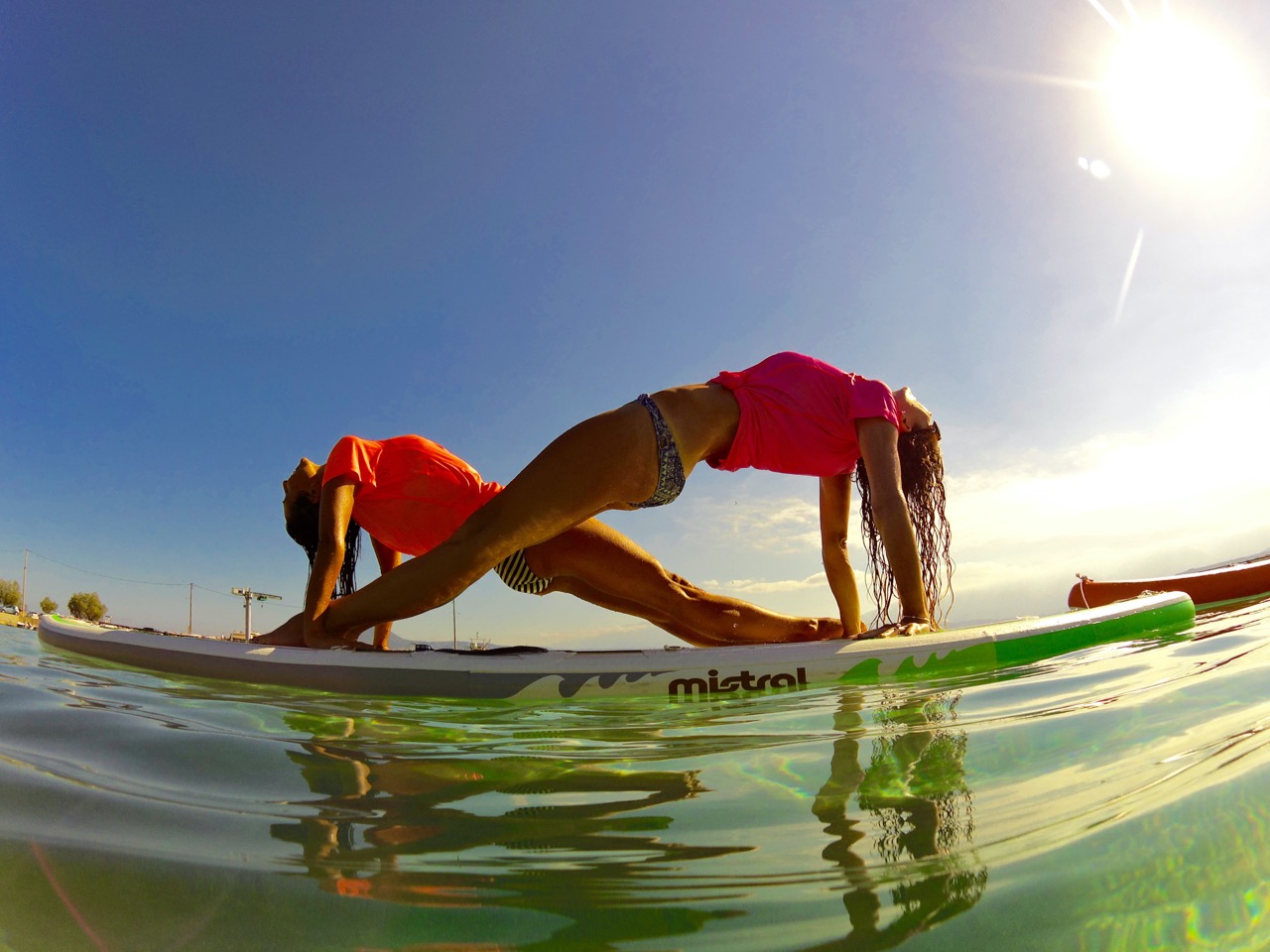
SUP Touring / SUP Adventuring / SUP Cruising (Intermediate/Advanced)
- Between 12'6 (384cm) and 14' (426cm) in length and 30 (76cm) - 32" ( 84cm) wide.
- Sleek, stable, efficient shape with added cargo netting for greater versatility.
- The longer length provides added speed and glide for covering distance.
- Both SUP inflatable touring boards and rigid touring hardboards are popular options.
- Choose an inflatable touring board if you intend to travel by plane for adventures.
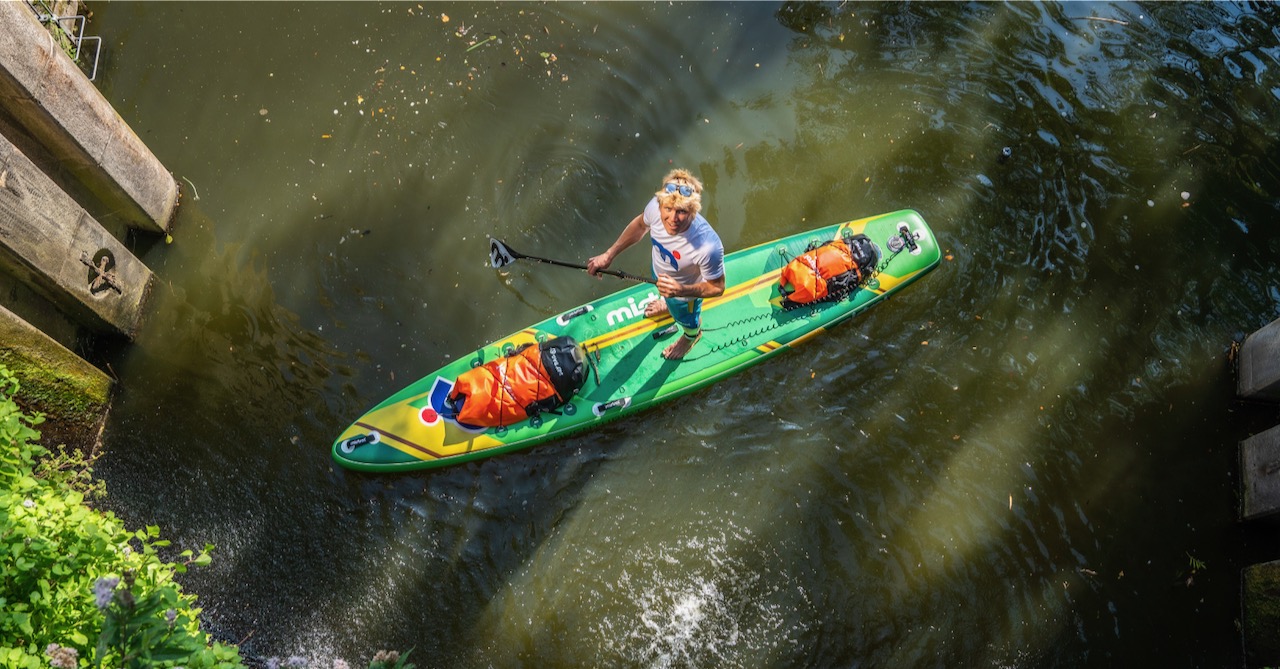
SUP Racing (Intermediate/Advanced)
- Either 12'6 (384cm) or 14' (426cm) and 20" (51cm) - 26" (66cm) wide.
- Sleek with low stability for speed-focused performance.
- Rigid boards are the primary domain for race boards due to higher performance.
- Inflatables are raced where a division for 12'6 and 14' inflatable race paddleboards are included.
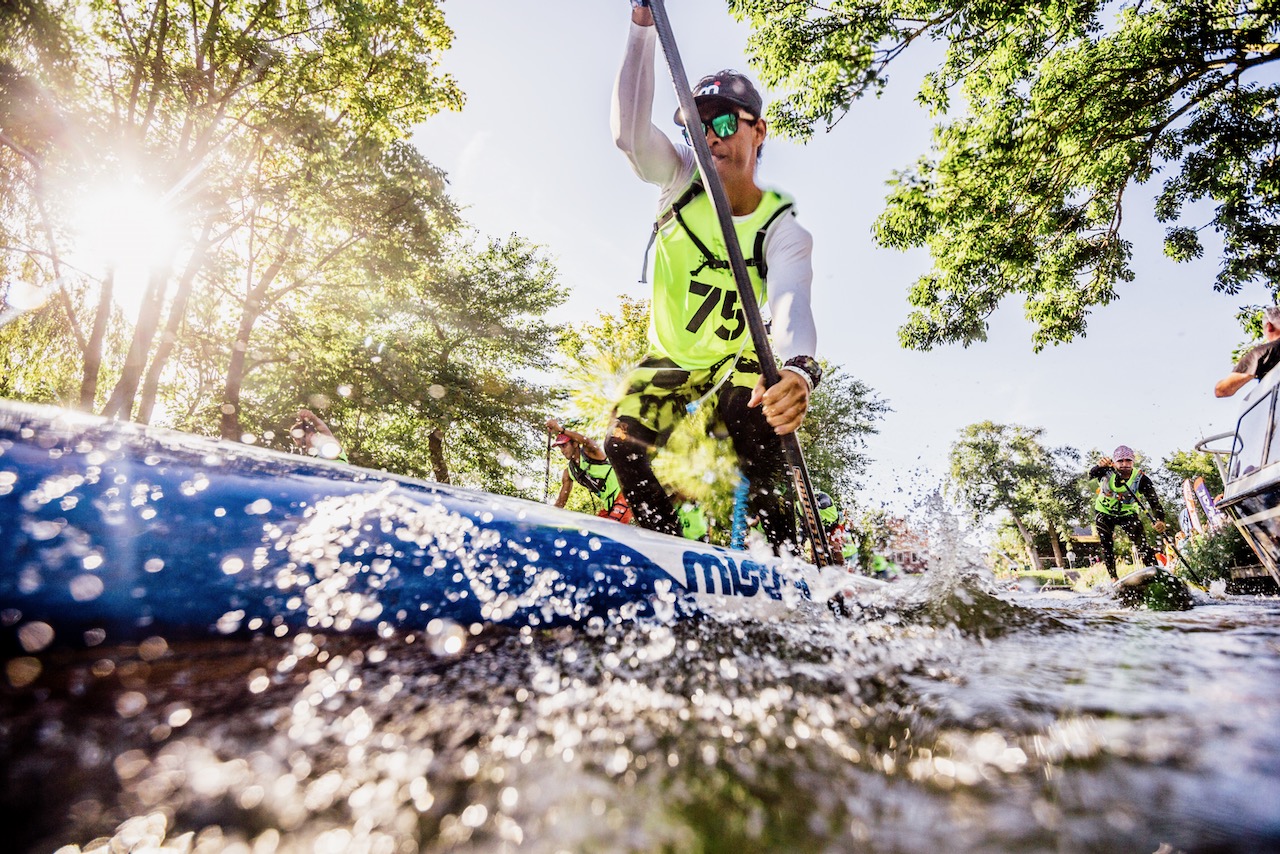
SUP River Running (Intermediate/Advanced)
Drifting down a slow-moving river where there is no white water turbulence.
- Between 9'6 (292cm) and 11'5 (353cm) and 32 (81cm) - 34" (86cm) wide.
- Short, nimble and robust for river running.
- Stable (wider) design for rougher waters.
- Inflatable designs are most popular due to low impact when falling.
- Less prone to impact damage and impact absorption.
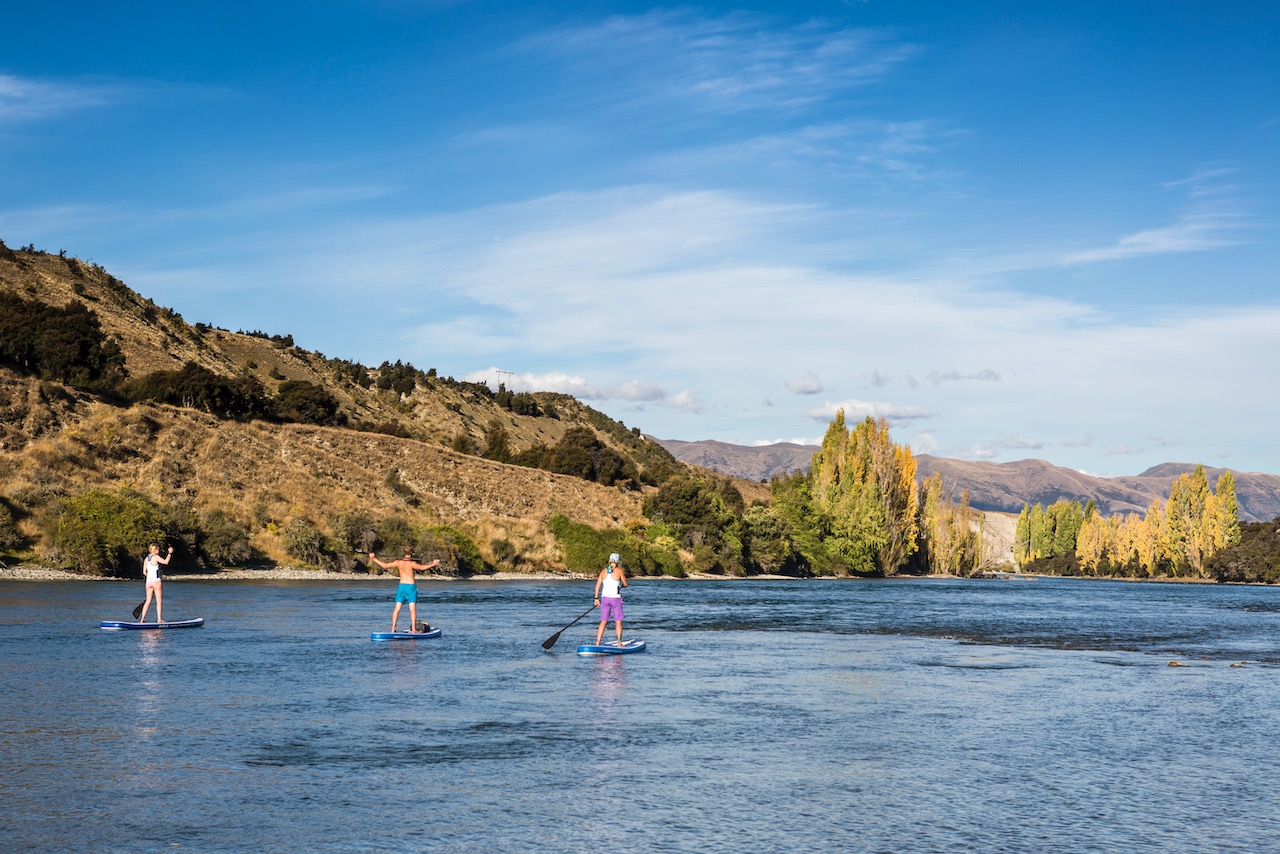
White Water SUP
A niche interest for inland paddlers living by swift-flowing rivers.
Inflatable paddleboards are commonly used with specific characteristics.
Participation requires special knowledge and professional guidance.
A high-risk activity.
- Boards are short for high manoeuvrability.
- Length of 9'0 up to 11'0, depending on the grade of the river.
- Wide widths are often over 34".
- Additional grab handles all-round.
- Step back pad and high deck traction.
- Cargo net.
- Reinforced rails and nose area.
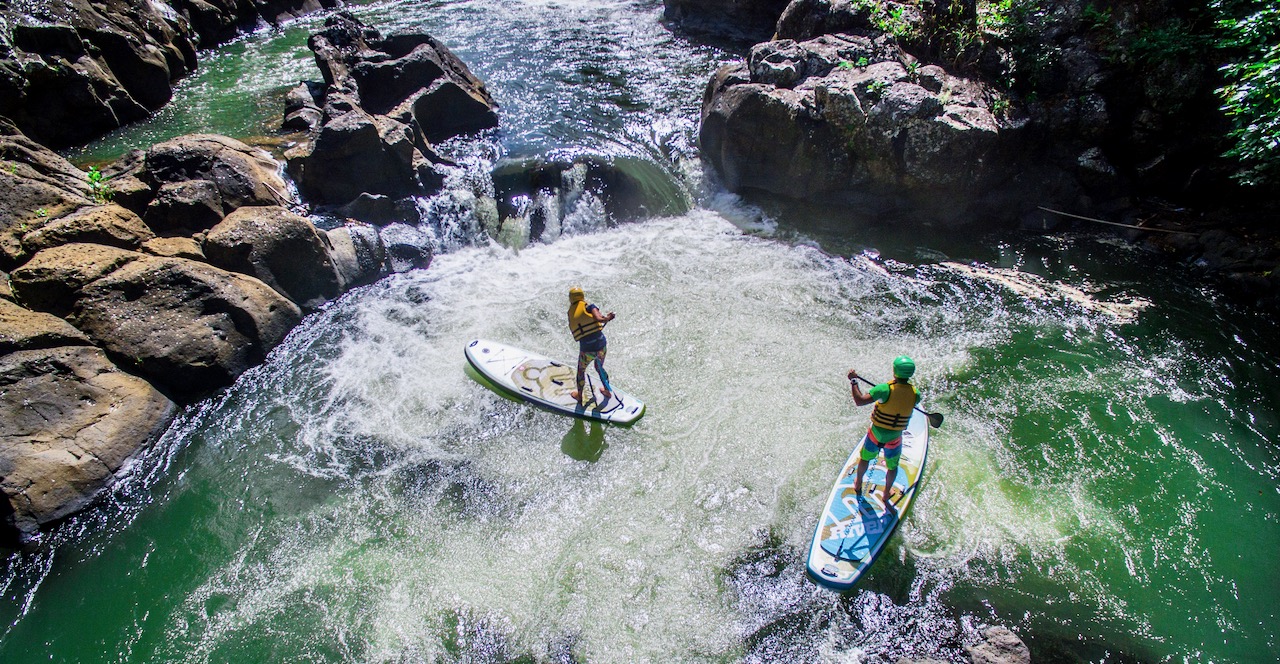
SUP Surf (Intermediate/Advanced)
- Between 7' (213cm) and 11'6 (353cm) and 23" (58cm) -32" (81cm) wide are used for SUP surfing.
- Rigid boards perform best.
- Smaller radical shapes for high-performance riding.
- Longer, wider designs (Malibu) for riding fuller surging waves.
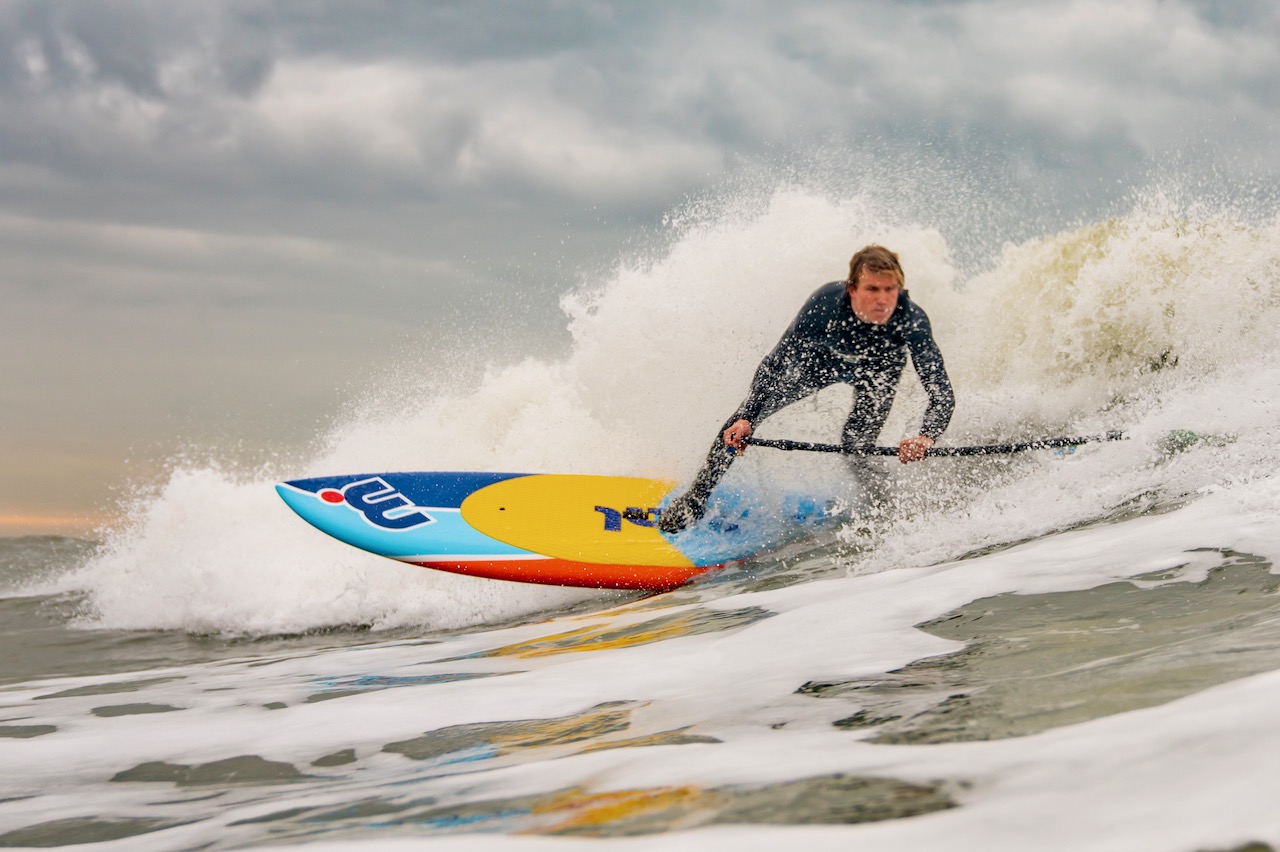
Essential Paddleboarding Equipment
The two most essential pieces of equipment are the SUP paddle and SUP leash.
SUP Paddles
- A SUP paddle is critical to make paddleboarding possible and enjoyable.
- SUP paddles come in different constructions, configurations and blade shapes.
- Whether you're a beginner or an experienced paddler, everyone benefits from a good design and a light paddle.
- Inflatable SUP boards are often supplied with an adjustable, two-piece budget paddle.
- An adjustable SUP paddle allows the shaft to be lengthened or shortened to suit different paddler heights.
- For touring, cruising, adventuring, racing, surfing and river paddling, you should consider a lightweight carbon paddle.
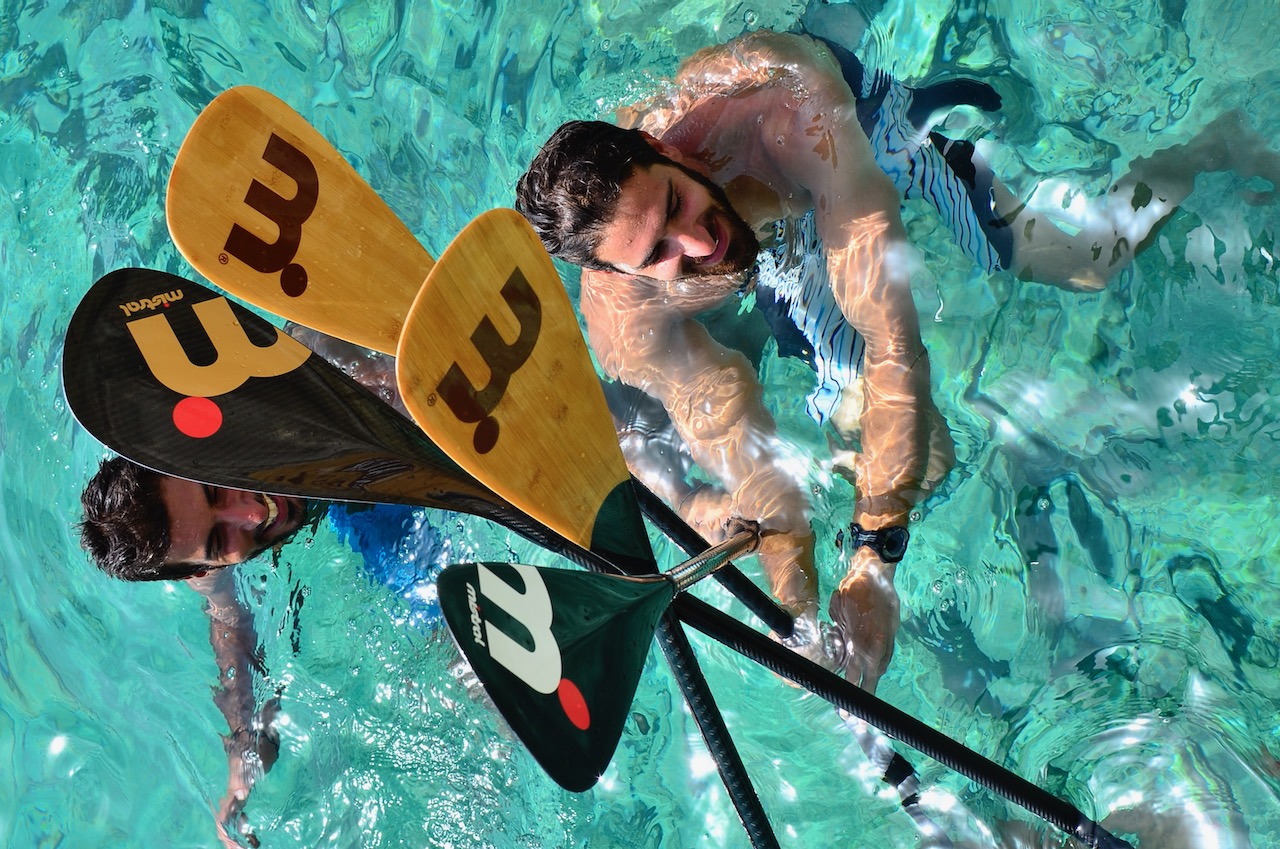
Adjustable SUP Paddles Versus Fixed Length Paddles
- Adjustable Paddles (2 -piece) and Travel Paddles (3-piece)
- Designed for multiple users, couples, families and commercial providers.
- The telescopic upper shaft can be adjusted to suit the height of differing users.
- There is an added weight due to the addition of the locking clamp mechanism and telescopic section.
- While not designed to be super high-performing, they offer a convenient multiple-user solution.
- A three-piece paddle will generally fit within an inflatable SUP bag, making it very convenient.
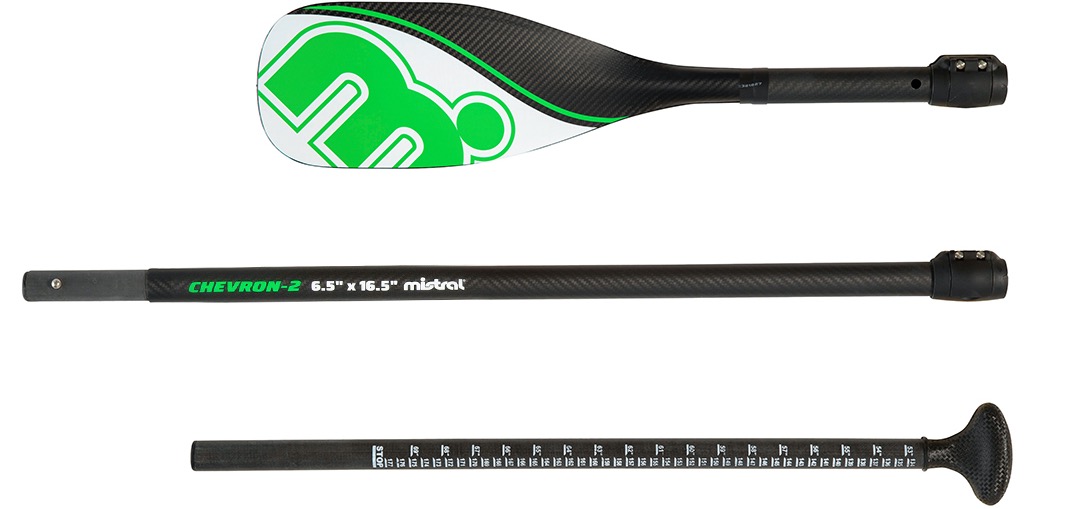
- Fixed-length Paddles
- Designed to be cut to the desired length for the user.
- The shaft is supplied as one length, is cut to length, and the handle (grip) is glued.
- These paddles are, for the most part, lighter (if carbon constructed) and generally higher performing.
- They suit the dedicated paddler who races, tours or surfs and demands the best performance from their paddle.
- Investing in a paddle bag for your carbon fixed-length paddle is a good idea.
- When travelling by plane, you can check it in as oversized luggage.
You must ensure the overall length of the paddle from tip to grip is optimum for best performance and injury prevention.
With an adjustable paddle, you can micro-manage this; for a fixed-length paddle, you must measure carefully.
SUP Leashes
- A SUP leash connects you, the paddler, to your board.
- The leash is fixed to a fixing point at the rear of the board.
- A leash 'cuff' is then wrapped around your ankle or below the knee, secured with Velcro®.
- Many inflatable boards come supplied with a coiled leash to be worn either on the ankle or below the knee.
- NOTE: For swift-flowing waters (rivers, tidal flows, etc.), a waist-worn leash is required; please be sure to look for professional advice.
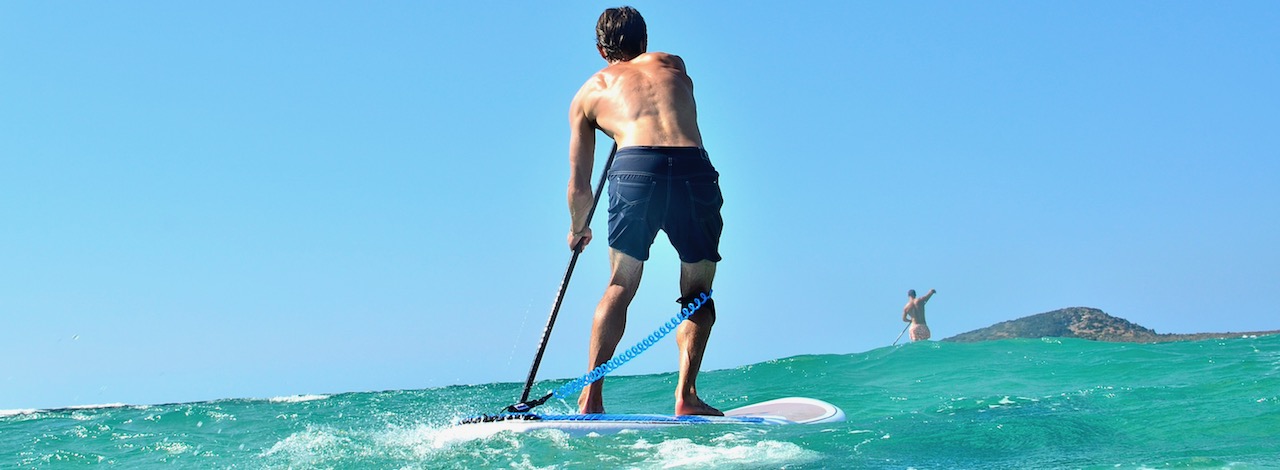
Why Should I Wear my SUP Leash at all Times?
- SUP paddlers should always wear a leash because this is 'Best Practice'.
- Separation from your board when you fall is a natural consequence of falling off.
- With the added force from wind, waves, and moving water, these factors add momentum in moving your board away from you.
- A wind-blown board can move faster away from you than you can swim!
- A suitable leash between your board and yourself will prevent separation.
Should I Wear a Coiled Knee or Ankle attached Leash in all Circumstances?
- 'No!' - if you intend on using your leash where there is 'swift moving water' (rivers, tidal flows, for example), seek professional advice.
- Alternative designs, such as waist-worn leash systems, are highly recommended.
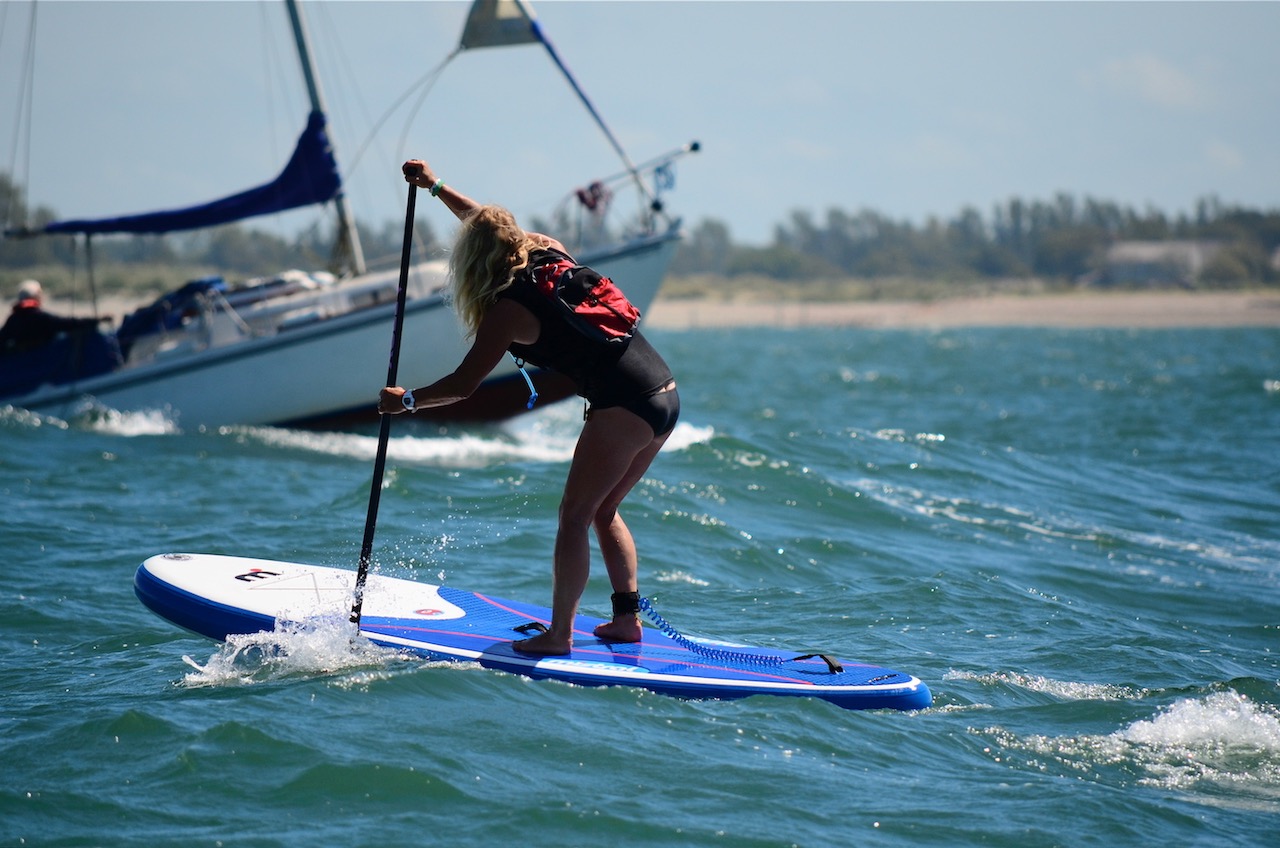
What Type of Leash Will I Need for SUP surfing?
- You will need to use a chord leash, and the leash should be approximately the same length as your board.
- A chord leash has less recoil than a coiled leash, which prevents the board from 'recoiling' back towards you.
Paddleboard Clothing
- Consider air and water temperature, wind chill and how much time you will spend in the water.
- In the case of SUP surfing, where you will sometimes be immersed, consider the water temperature and whether you need a wetsuit, long john or shortie (men/women)
- If recreational SUP boarding in warm weather and warm waters while boardshorts or a swimsuit may be OK, consider UV protection in the form of a Lycra® shirt. (men/women)
- Consider also footwear with rocks, sea urchins, coral and the potential for injury. An old pair of sneakers or reef walkers can be a good option.
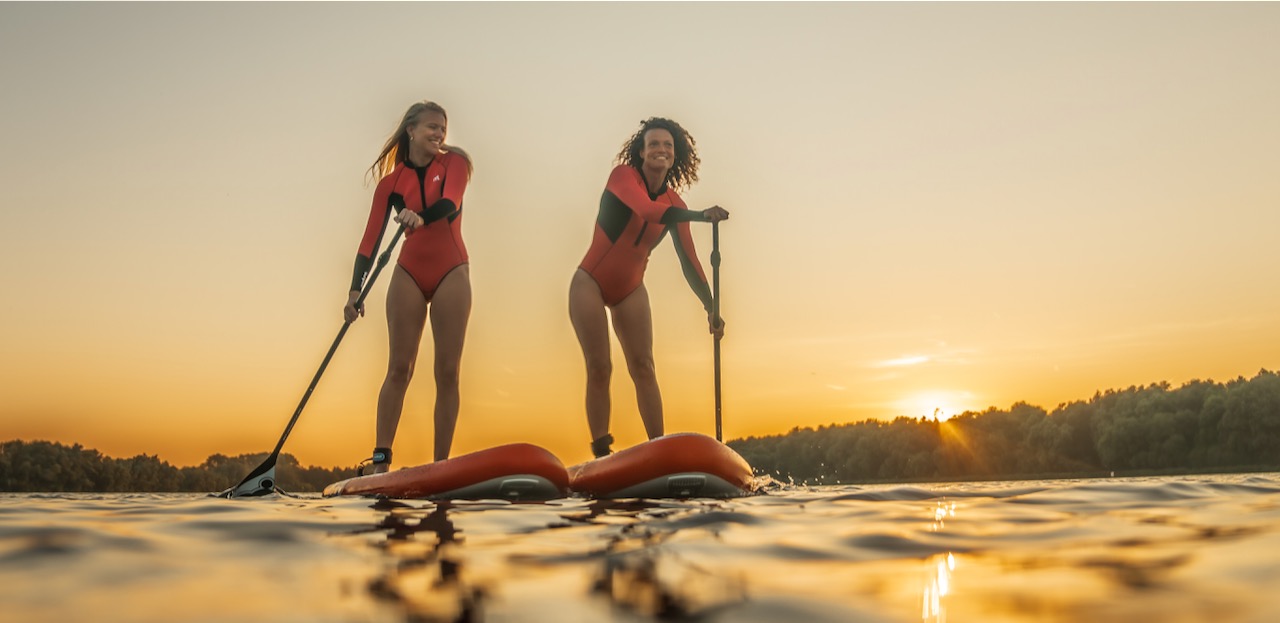
Do I Need to Wear a PFD (Personal Floatation Device) - Buoyancy Aid?
- In some regions of the world, PFDs are mandatory, but everywhere else, they are optional.
- Whether you choose to wear one is a personal preference based on your confidence in and on water.
- In the case of unconfident, weak swimmers and most children, wearing a PFD can bring about confidence and peace of mind.
- Note that a PFD/Buoyancy Aid is only an 'Aid to Floatation'.
- You must remount the board without hindrance, so your PFD must be designed correctly.
- Seek professional advice when seeking a PFD/Buoyancy Aid or similar device.
Paddleboard Dry Bag or SUP Deck Bag
- Consider adding a waterproof dry bag or SUP deck bag for an extended time on the water.
- Carry essentials such as water bottles, car keys, mobile phones, energy snack foods, windcheaters, maps, etc.
